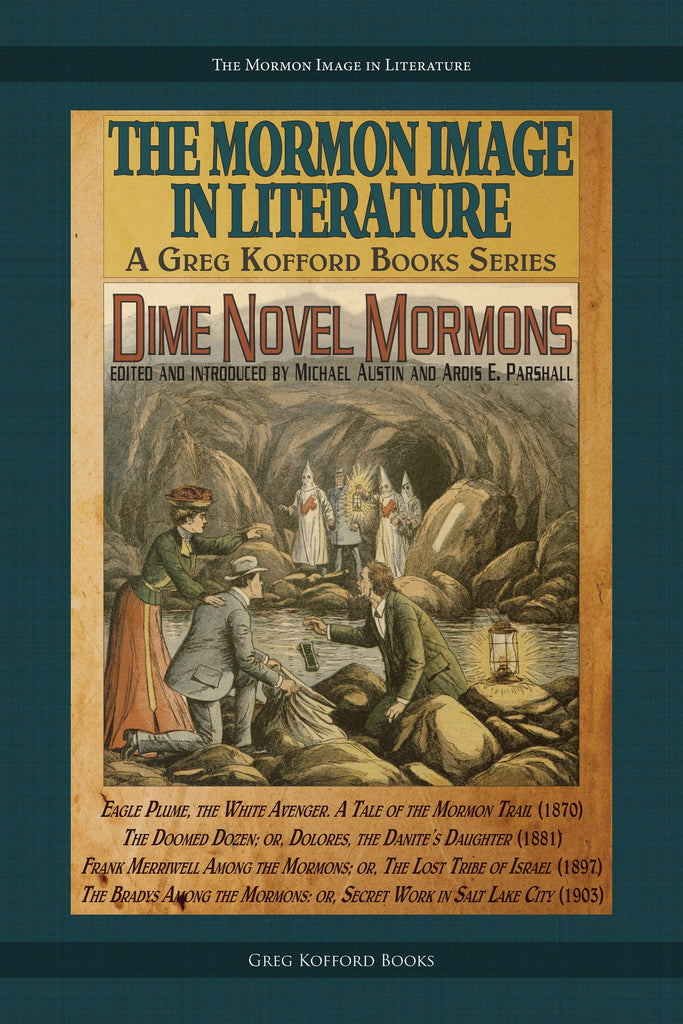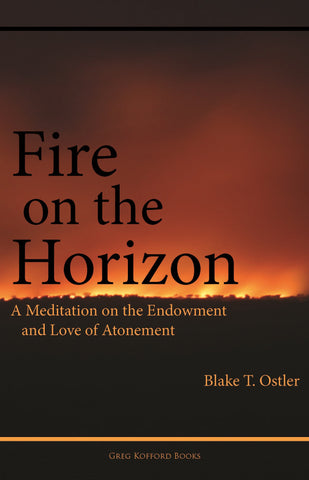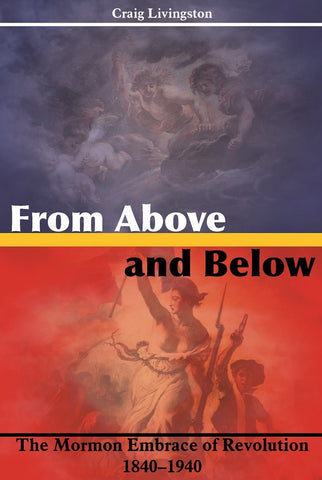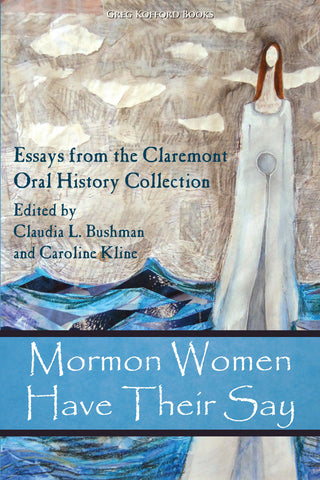Dime Novel Mormons
$22.95
edited and introduced by Michael Austin and Ardis E. Parshall
2018 Best Anthology Book Award, John Whitmer Historical Association
- “Kofford has done a remarkable job in reproduction here from the original art to historic typefaces. The editors provide helpful introductions to the now forgotten age of this piece-work for hire. They are just fun to read.” — By Common Consent
- “A great treasure is preserved for us to read and ponder.” — The Millennial Star



Available in ebook for Kindle, Nook, Kobo, Google Play, and Apple.
Also available through Amazon.
Part of The Mormon Image in Literature series
Download a free sample preview.
Book Description:
Dime novels probably did more than any other kind of book to turn lower- and middle-class Americans into both book owners and book readers. They were so cheap that almost anyone could afford them, and so exciting that almost everybody wanted to read them. It’s hard to tell just how many of these dime novels featured Mormons, but the way Mormons were portrayed in dime novels was remarkably consistent over many decades and multiple genres. This consistency tells us that dime novelists were playing with common stereotypes that nearly all their readers recognized—indeed, these stereotypes worked their way into much of the more respectable literature of the day and influenced the way American culture has interacted with Mormonism ever since. These tropes were based on three things, perhaps the only three things that most Americans knew about the Mormons in the final decades of the nineteenth century: Danites, polygamy, and the Mountain Meadows Massacre. Whatever variation occurs in the dime novels comes from mixing these three ingredients into new concoctions.
For this volume, four full-length dime novels have been chosen to represent different aspects of the Mormon image in dime novels: Eagle Plume, the White Avenger. A Tale of the Mormon Trail (1870); The Doomed Dozen; or, Dolores, the Danite’s Daughter (1881); Frank Merriwell Among the Mormons; or, The Lost Tribes of Israel (1897); and The Bradys Among the Mormons; or, Secret Work in Salt Lake City (1903). The often-lurid and scandalous portrayals of Mormons in these dime novels had consequences for the relationship between Mormons and the rest of the United States. They would represent reality for millions of people, and the basic portrayals found their way into more serious literature. Understanding how these stereotypes were created and first employed can help us understand many things about the way that Mormonism has always functioned in American culture.
AuthorCast Interview with the Editors:
Comprehensive Table of Contents:
.
Introduction
A Mormon Dime Novel Bibliography
Eagle Plume, the White Avenger.
1. The Adopted Son of the Dacotahs.
2. The Gantlet of Death.
3. The Chief of the Danites.
4. What Happened Before the Moon Went Down.
5. The Letter L.
6. The Spider and the Fly.
7. The Secret of the Waters.
8. The Spot of Blood.
9. The Footprints by the River.
10. An Elder’s Wooing.
11. The Elder Plays a Desperate Game.
12. The Three Friends.
13. The Story of the Danite.
14. Fate.
The Doomed Dozen; or, Dolores, The Danite’s Daughter.
1. The Suicide’s Daughter.
2. The Secret.
3. Mother and Son.
4. A Wolf in Sheep’s Clothing.
5. Friend or Foe.
6. The Threat.
7. Snakes in the Grass.
8. The Flight.
9. The Danites.
10. An Unexpected Ally.
11. Caught in Their Own Trap.
12. Hope and Despair.
13. The Masked Visitor.
14. Mysterious Intruders.
15. Faith in a Foe.
16. A Strange Story.
17. Friends in Disguise.
18. Hope.
19. The Danite and His Daughter.
20. Diamond Cut Diamond.
21. The Allies Scent Danger.
22. The Messenger from Fort Bridger.
23. The Prophet and His Pet.
24. Judith.
25. The Plot.
26. Unmasked.
27. A Strange Quintette.
28. On the Trail.
29. Thwarted.
30. Set Free.
31. Good for Evil.
32. The Black Jury.
33. A Cry for Mercy.
34. The Mormon Wife.
35. Angels’ Rest.
36. Hercules Bluff.
37. Hercules Bluff’s Little Game.
38. A Border Sport’s Mistake.
39. Hors de Combat.
40. The Wounded Danite.
41. Number Twelve.
42. A Pair of Precious Pards.
43. What Satan’s Pet Heard.
44. A Life-Debt Paid.
45. Well Met.
46. Conclusion.
Frank Merriwell Among the Mormons; or, The Lost Tribe of Israel.
1. An Unyielding Father.
2. William Ayer is Surprised.
3. A Fruitless Appeal.
4. Frank and Jack.
5. Whitcomb’s Story.
6. “In the Forbidden Valley.”
7. A Dash to the Rescue.
8. The Mad Prophet.
9. A Battle Against Odds.
10. In the Dungeon.
11. The Black Tribunal.
12. The Pit of Fire.
The Bradys among the Mormons; or, Secret Work in Salt Lake City.
1. The Man with the Roman Nose.
2. The Bradys Find Themselves up against Trouble at the Very Start.
3. About the Man Who Threw a Fit in Old King Brady’s Room.
4. Major Merry Talks Mine.
5. The House Behind the Wall.
6. Old King Brady Finds Himself Next to Mr. Podmore at Last.
7. Grace.
8. The Brothers of the Golden Lion.
9. Caught in a Trap.
10. Old King Brady in the Lion’s Den.
11. Simon Sellers Goes Back on the Mormons.
12. Conclusion.
Q&A with the Author:
.
Q: For those who are not familiar with the Mormon Image in Literature series, can you explain its purpose and scope?
Mike: The Mormon Image in Literature series is a collaboration between an archival researcher and a literary critic that seeks to reprint the books that shaped the public perceptions of Mormonism in the nineteenth and early twentieth centuries. We will include books by Mormons and books about Mormons, but will focus on works that are hard to find and virtually unknown in the twenty-first century (as opposed to books like A Study in Scarlet and Riders of the Purple Sage, which have been continuously in print since their first publication). Along with faithful reproductions of the texts that scholars can use as primary research texts, each of these volumes contains an introduction and notes that set the works, and their authors, in a context that relates both to the way Mormons were understood by the author and the way the publishing industry in the United States was changing and demanding different kinds of works.
Ardis: These novels have next to nothing to teach me about Mormon history directly—they're too wildly inaccurate to be data sources. What they do give me is a chance to enter the Mormon past, in a sense. I read the words, knowing that readers of a hundred or more years ago read the same words. This is what people thought of us. If I were a missionary, this is what would be in the minds of people behind the doors I knocked on and in the minds of listeners at street meetings. If I were a Mormon mother sending my boy out as a missionary, this is what he would have to face, this is why I might be afraid for him, this is why I would be proud of him. This is what is behind the sneer on the conductor's face when he takes my ticket; this is what brings a curl to the lip of the government employee I appeal to for assistance. I know how I feel and what I think when I read news accounts today, or watch current TV, with caricatures of my behaviors and beliefs; when I read a sensational novel like those in our series, I know what it meant and felt like to a Mormon of the era to read these. We can dress up like pioneers and we can put on pageants about episodes in Mormon history—but that is superficial playacting. Watching the stories of these novels playing out in my imagination, just as they played out in the imaginations of their original readers, seems to me to be much closer to replicating historical reality.
Q: If you ran a bookstore, what section do you think these books would fit best in?
Ardis: Fiction, or historical fiction. I would keep the series together, rather than breaking it up by genre. (The genre mix will be more and more evident as the series continues.)
Mike: I would put them in the fiction section. Or in the Mormon Studies section if I owned one of the handful of bookstores in the world with a Mormon Studies section. And, like Ardis, I would keep the series together.
Q: Granted that the four titles collected in Dime Novel Mormons are not considered “highbrow” literature, can you give me a passage or scene that stood out to you in illustrating how public perception of Mormons may have been influenced by popular media tropes?
Ardis: When the villain Mercer Aldrich/John Leigh is introduced in Dolores, the Danite's Daughter, he is portrayed as handsome and intelligent and well-mannered and well-dressed—everything a woman might want, seemingly. But, of course, his civilized exterior is a mask hiding what he really is: a Mormon! a Danite! a threat! The fact that he can present himself so attractively only underscores the danger by warning readers that they cannot trust their judgment where a Mormon is concerned. That is a trope repeated in many of these novels, whenever a Mormon agent or missionary is among civilized society in the East or in England—it is only when he is among his own evil kind that the character's true nature shows itself.
A flesh-and-blood Mormon missionary who was kind and articulate had two strikes against him when the people he approached had that stock Mormon villain in mind. The more polite an elder was, the more effort he put into personal cleanliness, the more cheerful he was, the more carefully he presented his gospel message, the more at a disadvantage he could be: Isn't he just like the novels portray Mormons? Why, the nicer he is, the more rotten his heart must be, and the more clever he is at concealing his evil intent! There really isn't much a man can do to dispel the expectations of a public primed to expect the worst exactly when he is on his best behavior. In some cases, novelists who are most familiar with the Mormon message have also worked bits of standard missionary presentations into their stories, so that when an elder taught a bit of doctrine, it must have set off alarm bells in the minds of readers—here is a Mormon who not only acts the way these novels have depicted Mormons, he's actually saying what they warned me he would say! He must be just as bad as they say, too!
Mike: In the beginning of The Bradys Among the Mormons, Old King Brady, the nation's most accomplished private detective, is summoned to Washington, DC, to meet with a senator. Utah has become a state, and a candidate for its congressional seat has proposed to the senator's daughter. The senator will allow the marriage, but only if the Mormon, Joseph Smith Podmore, proves to be single and not secretly practicing polygamy.
This book came out right at the start of the Reed Smoot hearings, so it refers to a major public concern of the time. But it also shows a popular dime novel publisher trying to get as much life as possible out of the Mormon stereotypes that had existed for about thirty-five years in this kind of fiction. Brady will travel to Utah and discover a beautiful and modern Salt Lake City, but beneath that city, in a series of tunnels and caverns accessible only to Mormon elders, things go on just as they always have: polygamy, Danites, blood atonement, and all the rest.
I think that the new generation of dime novels that came out at the turn of the twentieth century created modern frames for the previous century's sensational stereotypes of Mormons, which had a lot to do with the perpetuation of those stereotypes and the assumption of many Americans that nothing really changed after the Manifesto.
Q: Was there anything in this collection of stories that surprised you in its depiction of Mormons, whether positive or negative? Anything that did not follow the standard villain tropes of secrecy, sexual deviancy, and violence?
Mike: In Frank Merriwell Among the Mormons, the author takes care to depict the standard Mormon villain—an aging patriarch trying to force a beautiful young maiden to marry him—as a member of a breakaway group of Mormons who are defying the Church. One of the heroes of the story is a young, monogamous, mainstream Mormon who wants to marry the beautiful young maiden in question. Frank Merriwell points out that the rising generation of Mormons are good citizens who are opposed to polygamy. In 1897, in a dime novel, this amounts to something like high praise.
Ardis: Hmm. This one is harder. Nothing comes to mind as surprising in the depiction of Mormons—the maidens are all fair and helpless; the Mormon villains are uniformly despicable; the Gentile heroes are unfailingly perfect specimens of stalwart American manhood.
One element that I hadn't been aware was so prevalent in these books is that the Mormon landscape is shown to be as malevolent as the Mormon soul. There is that vast underground network of dimly-lit caverns beneath Salt Lake City, all interconnected by natural tunnels, their walls sometimes dripping with lake water, their dead-ends dropping off suddenly into bottomless pits, their acoustics so perfect that our heroes can eavesdrop on secret Danite conversations without their own voices or footsteps betraying their presence to those Danites. The natural twists and turns in those tunnels and caverns somehow magically line up with the geometric regularity of the surface, so that the house of every prominent Mormon, built on Salt Lake's straight streets and right-angled blocks, has easy access to the subterranean world. Even the mountain hideouts have magical qualities. Danites, and eventually our heroes, can pass into and out of valleys by means of caves and secret passages.
I understand that readers of dime novels were probably not familiar with the legitimate writings of naturalists and army surveyors and the great Western explorers who report no trace of such geographic features, but it's still a bit surprising to me that readers of these stories could suspend their disbelief in such weird and abnormal landscapes in order to enter into the story. So, you have no faith in the basic humanity of tens of thousands of Mormons? Okay, but how does that translate into your lack of faith in the integrity of the natural world? That, in some ways, surprises me.
Q: This has already been addressed in passing, but I’d like to make it an explicit focus: How would you address readers who may be concerned that the books collected in this volume are often stigmatized as being “anti-Mormon” literature?
Mike: Oh, there is no question that these are anti-Mormons books—much more so than anything being produced today. But these portrayals are not unrelated to depictions of Mormons in some kinds of contemporary literature—the modern mystery novel, for example, where there are still Danites and blood atonement in some places. It is important for Latter-day Saints to understand the history of how we have been portrayed because that history has had consequences that we are still living with. It is always worth our time to learn the history of ideas and perceptions that are still with us today.
Ardis: They are anti-Mormon books—they falsify Mormon doctrine and character and intent; they shaped and promoted anti-Mormon feeling that extended from the novels into the real world and persists to the present. The question for me is, “Granted that these are anti-Mormon books, is there any good purpose in reprinting them, in reading them?” And I would answer that with a shouted “Yes!”
You won't learn anything about Mormonism here, but you will learn—in a sometimes delightful way, if you can turn off the natural tendency to take offense—quite a bit about the world that Mormons lived in or confronted whenever they looked outside Mormondom. You'll better understand where these warped views come from when you hear them repeated in some form today.
And I wouldn't hesitate to recommend that anybody, young or old, Mormon or not, read these stories, recognizing them for what they are. I agree with something Boyd K. Packer said in 1976 in a fireside address about the arts: “Teachers [readers in this case] would do well to learn the difference between studying some things, as compared to studying about them. There is a great difference.” Readers aren't reading anti-Mormonism in these novels to adopt that view themselves; they're reading about it, to understand and face it.
Q: Can you give us a glimpse as to what is yet in store for the Mormon Image in Literature series?
Mike: The next few volumes will focus on some of the literature produced by Mormons in the nineteenth century. We are working on a critical edition of Orson F. Whitney's Elias, for example, and on the collected works of Josephine Spencer, which have never been published before.
Ardis: I'm especially excited for two books written by Mormon women, which are as different as can be from the dime novels. The first is one or more volumes of the collected short stories of Josephine Spencer who saw well beyond her own time, and the other is the novel Venna Hastings by Julia Farr (the pseudonym of a woman I had been chasing through history before realizing she was a novelist). Both of these present a Mormon image that is positive, generally not preachy, and which Mormons at the turn of the twentieth century could read with interest—and maybe a sigh of relief that for once they could see themselves, not caricatures, on the printed page.
Along with these, you can look forward to mysteries, love stories, comedies, an outrageous depiction of missionaries that sparked a national investigation, high-minded or well-intentioned religious prose—just about every genre imaginable, except perhaps science fiction.
Praise for Dime Novel Mormons:
“Reading these dime novels gives me perspective on why various people have such strange ideas about Mormons. . . if you can suspend a feeling of deep outrage at the gross factual distortions contained in these books, you will likely have a great time reading the tales.”— Meg Stout, The Millennial Star
“Kofford has done a remarkable job in reproduction here from the original art to historic typefaces. The editors provide helpful introductions to the now forgotten age of this piece-work for hire. They are just fun to read.” — Bill Smith, By Common Consent
“Because of Mormon inspired fiction, like that found in these four dime novels, we have a better understanding of the struggles and strains in the collision of the two worlds of Mormons and Gentiles We have Michael Austin, Ardis E. Parshall, and Greg Kofford Books to thank for this great gift to our Mormon heritage. A great treasure is preserved for us to read and ponder.” — Gerald Smith, The Millennial Star
“Dime Novel Mormons will appeal to readers interested in American and literary history, nineteenth-century pop fiction, and specifically the history of the calumniation of the Latter-day Saints.” — Veronica Anderson, BYU Studies
About the Editors:
Michael Austin is the author or editor of seven books and more than 50 articles, book chapters, and reviews, including Re-reading Job: Understanding the Ancient World’s Greatest Poem. He is currently Vice President of Academic Affairs at the University of Evansville.
Ardis E. Parshall is a historian, freelance researcher specializing in Mormon history, and author. She co-edited with Paul Reeve Mormonism: A Historical Encyclopedia and is currently writing She Shall Be an Ensign, a history of the LDS Church told through the lives of Mormon women. She blogs at Keepapitchinin.
More Information:
254 pages
ISBN 978-1-58958-517-1 (paperback)






Share this item: